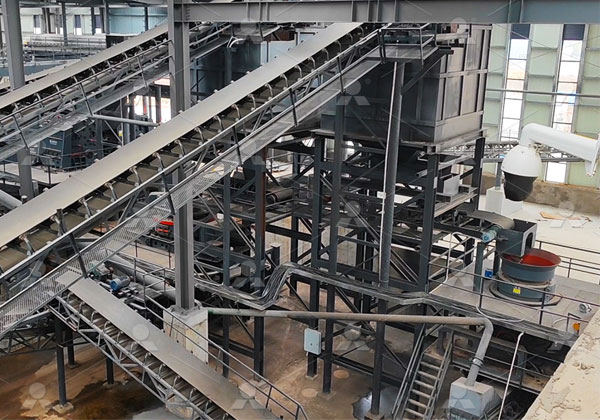Complete Ore Crushing Systems: Overview and Components
A complete ore crushing system is designed to process raw ore from its natural state into smaller, more manageable pieces for further processing. This system is integral to the mining and mineral processing industries, enabling efficient extraction of valuable minerals from ore. A well-designed ore crushing system combines several key components, including crushers, screening equipment, conveyors, and sometimes, pre-treatment equipment to optimize performance and reduce wear.

1. Crushing Stages
Ore crushing systems are typically configured in stages, depending on the nature of the ore and the desired final product size. The main stages of ore crushing include:
- Primary Crushing: This is the first stage of crushing, where large, raw ore is reduced to a manageable size. The primary crusher, typically a jaw crusher, gyratory crusher, or hammer mill, is used to break down the bulk ore. The goal of primary crushing is to reduce the ore to an intermediate size (usually between 10 to 25 cm), which can be fed into secondary crushers.
- Secondary Crushing: In this stage, the material from the primary crusher is further reduced in size. This is typically done using a cone crusher or impact crusher, where the size of the crushed material is reduced to around 1-5 cm. Secondary crushers help refine the product for processing, ensuring a more uniform particle size for the next stages of grinding or concentration.
- Tertiary Crushing: In some systems, tertiary crushers are employed to produce finer material, which is particularly important for ores that need to be ground to a fine size for extraction methods like flotation or leaching. Tertiary crushers may be impact crushers, vertical shaft impact (VSI) crushers, or even additional cone crushers.
2. Screening and Sorting
After each crushing stage, the crushed ore is usually screened to separate particles by size. Screening systems are composed of vibrating screens or static screens, designed to filter out finer particles or remove oversize material. The material that passes through the screens proceeds to the next crushing stage or is sent for further processing, such as grinding or flotation.
Additionally, some ore crushing systems use sorting equipment such as air classifiers or dense media separators to further refine the material. This sorting helps in separating valuable minerals from waste materials (tailings) early in the process, reducing the overall processing costs.
3. Automation and Control
Modern ore crushing systems often incorporate automation and control systems that allow operators to monitor and adjust various parameters, such as crusher speed, throughput, and material characteristics. Automated systems can optimize efficiency, reduce wear on equipment, and ensure consistent production of the desired product.
Conclusion
A complete ore crushing system is a critical component of mineral processing, designed to reduce large ore particles into smaller, more manageable sizes for further processing. From primary crushing to secondary and tertiary stages, through screening, sorting, and conveying, the system ensures that the ore is prepared for extraction of valuable minerals. Efficient operation of these systems is essential for profitability, and advances in automation, dust control, and equipment technology continue to improve their efficiency and sustainability.

